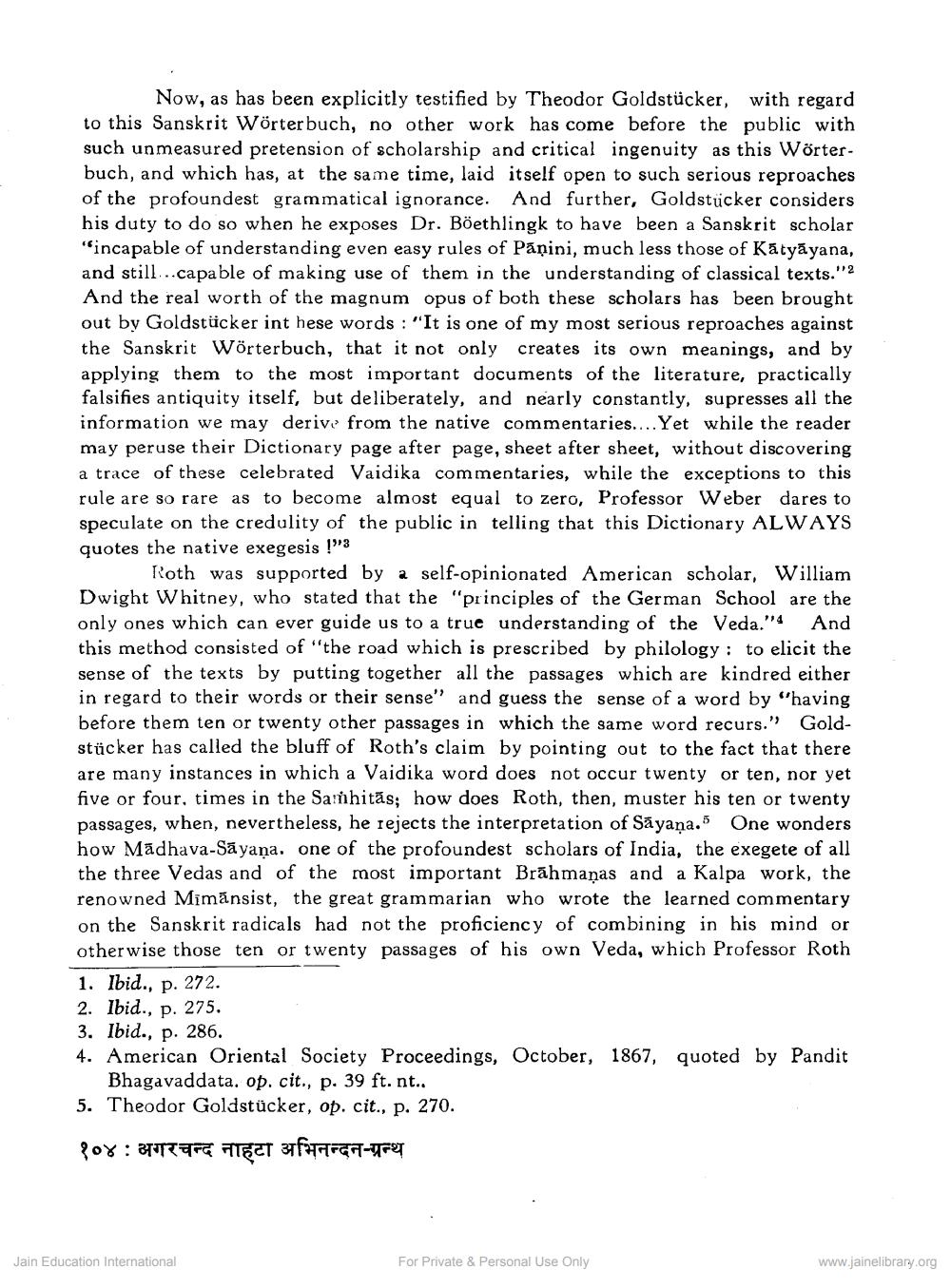________________
Now, as has been explicitly testified by Theodor Goldstücker, with regard to this Sanskrit Wörterbuch, no other work has come before the public with such unmeasured pretension of scholarship and critical ingenuity as this Wörterbuch, and which has, at the same time, laid itself open to such serious reproaches of the profoundest grammatical ignorance. And further, Goldstücker considers his duty to do so when he exposes Dr. Böethlingk to have been a Sanskrit scholar "incapable of understanding even easy rules of Pāṇini, much less those of Katyāyana, and still... capable of making use of them in the understanding of classical texts."2 And the real worth of the magnum opus of both these scholars has been brought out by Goldstücker int hese words : "It is one of my most serious reproaches against the Sanskrit Wörterbuch, that it not only creates its own meanings, and by applying them to the most important documents of the literature, practically falsifies antiquity itself, but deliberately, and nearly constantly, supresses all the information we may derive from the native commentaries.... Yet while the reader may peruse their Dictionary page after page, sheet after sheet, without discovering a trace of these celebrated Vaidika commentaries, while the exceptions to this rule are so rare as to become almost equal to zero, Professor Weber dares to speculate on the credulity of the public in telling that this Dictionary ALWAYS quotes the native exegesis !"3
Roth was supported by a self-opinionated American scholar, William Dwight Whitney, who stated that the "principles of the German School are the only ones which can ever guide us to a true understanding of the Veda." And this method consisted of the road which is prescribed by philology : to elicit the sense of the texts by putting together all the passages which are kindred either in regard to their words or their sense" and guess the sense of a word by "having before them ten or twenty other passages in which the same word recurs." Goldstücker has called the bluff of Roth's claim by pointing out to the fact that there are many instances in which a Vaidika word does not occur twenty or ten, nor yet five or four, times in the Sarhitās; how does Roth, then, muster his ten or twenty passages, when, nevertheless, he rejects the interpretation of Sāyaṇa.5 One wonders how Madhava-Sāyana. one of the profoundest scholars of India, the exegete of all the three Vedas and of the most important Brāhmaṇas and a Kalpa work, the renowned Mīmānsist, the great grammarian who wrote the learned commentary on the Sanskrit radicals had not the proficiency of combining in his mind or otherwise those ten or twenty passages of his own Veda, which Professor Roth 1. Ibid., p. 272. 2. Ibid., p. 275. 3. Ibid., p. 286. 4. American Oriental Society Proceedings, October, 1867, quoted by Pandit
Bhagavaddata, op. cit., p. 39 ft. nt.. 5. Theodor Goldstücker, op. cit., p. 270.
१०४ : अगरचन्द नाहटा अभिनन्दन-ग्रन्थ
Jain Education International
For Private & Personal Use Only
www.jainelibrary.org




